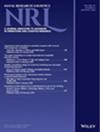Stakeholder perspectives on government subsidy programs: Trade‐in subsidy, consumption subsidy, or mixed subsidy?
IF 2.1
4区 管理学
Q3 OPERATIONS RESEARCH & MANAGEMENT SCIENCE
引用次数: 0
Abstract
Many governments worldwide offer various types of consumer‐specific subsidy programs, such as a trade‐in subsidy (TS) program that targets existing consumers only, a consumption subsidy (CS) program that covers both new and existing consumers with undifferentiated subsidy levels, or a mixed subsidy (MS) program that targets the two consumer segments with differentiated subsidy levels. However, which program is more beneficial to social welfare and other stakeholders is largely unknown. In this paper, we establish a game‐theoretic model to explore the impacts of these subsidy programs on different stakeholders (i.e., the firm, consumers, the environment, and social welfare). Interestingly, we uncover that the TS and MS programs have equal effectiveness in stimulating demand (collecting old products) from existing consumers, whereas the CS and MS programs have relative advantages in expanding the total demand from both new and existing consumers. We further find that (i) when product durability is low, the flexible MS scheme can lead to a quadruple‐win for all stakeholders, (ii) when product durability is moderate, the MS scheme is better for social welfare and the environment, whereas the CS scheme benefits the firm and consumers more, and (iii) when product durability is high, the MS scheme can achieve a triple‐win for the firm, consumers, and social welfare, whereas the CS scheme is better for the environment. Moreover, we identify the differential impacts of each program on different stakeholders when considering that the earmarked subsidy is limited and a secondary market exists. Our findings not only shed light on why the TS, CS, and MS programs are all likely to be adopted in practice but also provide helpful guidelines for governments aiming to offer a more effective subsidy program.利益相关者对政府补贴计划的看法:以旧换新补贴、消费补贴还是混合补贴?
世界上许多国家的政府都提供了各种类型的针对特定消费者的补贴计划,例如只针对现有消费者的以旧换新补贴(TS)计划、同时覆盖新老消费者且补贴水平无差别的消费补贴(CS)计划,或者针对这两个消费群体且补贴水平有差别的混合补贴(MS)计划。然而,究竟哪种方案对社会福利和其他利益相关者更有利,这在很大程度上还是个未知数。在本文中,我们建立了一个博弈论模型来探讨这些补贴计划对不同利益相关者(即企业、消费者、环境和社会福利)的影响。有趣的是,我们发现 TS 和 MS 计划在刺激现有消费者的需求(回收旧产品)方面具有同等效力,而 CS 和 MS 计划在扩大新老消费者的总需求方面具有相对优势。我们进一步发现:(i) 当产品耐用性较低时,灵活的 MS 方案可以为所有利益相关者带来四赢;(ii) 当产品耐用性适中时,MS 方案更有利于社会福利和环境,而 CS 方案则更有利于企业和消费者;(iii) 当产品耐用性较高时,MS 方案可以实现企业、消费者和社会福利的三赢,而 CS 方案则更有利于环境。此外,考虑到专项补贴有限且存在二级市场,我们还确定了每种方案对不同利益相关者的不同影响。我们的研究结果不仅揭示了为什么 TS、CS 和 MS 方案都有可能在实践中被采用,而且还为政府提供了有益的指导,以提供更有效的补贴方案。
本文章由计算机程序翻译,如有差异,请以英文原文为准。
求助全文
约1分钟内获得全文
求助全文
来源期刊

Naval Research Logistics
管理科学-运筹学与管理科学
CiteScore
4.20
自引率
4.30%
发文量
47
审稿时长
8 months
期刊介绍:
Submissions that are most appropriate for NRL are papers addressing modeling and analysis of problems motivated by real-world applications; major methodological advances in operations research and applied statistics; and expository or survey pieces of lasting value. Areas represented include (but are not limited to) probability, statistics, simulation, optimization, game theory, quality, scheduling, reliability, maintenance, supply chain, decision analysis, and combat models. Special issues devoted to a single topic are published occasionally, and proposals for special issues are welcomed by the Editorial Board.
 求助内容:
求助内容: 应助结果提醒方式:
应助结果提醒方式:


